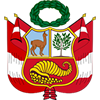|
|||||||||||||
| Mining Overview | |||||||||||||

Overview Mining in PeruPeru's mining industry contributes significantly to the country's economy (6.5% of the GDP). It is a major producer of gold (largest producer in Latin America), silver, tin, copper, lead and zinc. Peru's mineral production is based on the growth of its gold sector as well as expansion into hydrometallurgical projects. Peru experienced a 3-.6% growth in GDP during 2003 with the value of all Peruvian exports increasing by 11% to US$8.2 billion. Among the most important news in 2003 was Barrick Gold's decision to start construction of the Alto Chicama gold project. In 2003, the value of Peru's mine production grew by 21% to US$5.6 billion as the output of most minerals increased. The biggest increases were recorded for cadmium (16%), zinc (12%), and gold (9%). The value of mining products exported during the year rose to US$4.25 billion. Together with oil export revenues, mining revenues made up 60% of the country's total export revenues. Peru is embarking on a privatisation programme that has seen the piece meal privatisation of Peru's largest mining company, Empresa Minera del Centro del Perú S.A. (Centromin). Foreign investment in Peru has resulted in the development of several world class deposits, including Yanacocha and Pierina Gold Mines and the massive Antamina copper-zinc mine. In this process of expansion, mining has become yet more central to the national economy, and in particular to macroeconomic management. Although the mining sector only accounts for approximately 6-7% of GDP, 50% of Peru’s foreign currency is generated by mineral exports - indeed, over the period 1990-2003, mineral exports passed from US$ 1,447 million to US $ 4,554 million (Cooperacción, 2006). In 2003, mining accounted for 57% of all exports in Peru (World Bank, 2005) and 55% in 2005 (Dorman, 2006). Mining has also become a pole of foreign direct investment, and between 2001 and 2003 accounted for 37% of FDI in Peru (World Bank, 2005). The macroeconomic importance of the sector has also meant that the Ministry of Energy and Mines (MEM) has become a particularly powerful factor.12 Mining legislation and regulations have been designed in such a way that they have enhanced this power. Thus it is that all decisions about mine project development and approval are taken within MEM. MEM grants concessions; it reviews and approves (or not) the Environmental Evaluations (Evaluaciones Ambientales) that allow concessionaires to proceed with exploration; and the MEM then reviews and approves the Environmental Impact Assessments that companies prepare in order to move to the exploitation phase. The MEM is responsible for monitoring the environmental and social performance of companies against the standards laid down in the Environmental Impact Assessment.
|
|||||||||||||
|
|||||||||||||
The purpose of the website is entirely informational and it does not cooperate nor represent Nilam Resources Inc. in any way. HOME | CORPORATE | PROJECTS | INVESTORS | TERMS | CONTACT |
|||||||||||||




